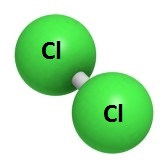Differences Between Chlorine and Chlorine Dioxide
While chlorine dioxide and chlorine are both oxidizing agents, their chemistry is quite different. Although they share a word, these two compounds have different chemical structures, and this explains why their chemical behaviors are dissimilar.
Let us dive right into these differences!
- Formation
One key difference between these two chemical compounds is their formation. Chlorine is formed in a process called chlor- alkali, where electricity is applied to a solution of brine and common salt.
alkali, where electricity is applied to a solution of brine and common salt.
Chlorine dioxide is made chemically from sodium chlorate or sodium chlorite. It can also be produced electro-chemically.
- Water Solubility
A unique quality of chlorine dioxide is its ability to dissolve in water 10 times more than chlorine. Unlike chlorine, chlorine dioxide has high water solubility because it remains as dissolved gas when it enters water. Chlorine, on the other, hand hydrolyzes in solution.
- Amount of Electrons
Chlorine dioxide has the ability to absorb five electrons while chlorine can absorb two electrons. This give chlorine dioxide a higher oxidation capacity. For this reason, chlorine dioxide is considered 2.6 more powerful and effective when compared to chlorine.
- Corrosiveness
Another difference between chlorine and chlorine dioxide is the level of corrosiveness. Chlorine has a higher oxidation strength and hydrolyses in solution to form acid. Because of this, it is highly reactive and corrosive.
On the other hand, chlorine dioxide has ahigh oxidation capacity and less oxidation strength, rendering it effective even at low concentrations. It does hydrolyze and is less corrosive. It is only reactive with other reactive substances like sulphuric acid and amines.
- Disinfection Byproducts
Being an oxidator, chlorine is known for producing more disinfection byproducts. This is especially true when chlorine is used to treat water containing bromide. In this case, it oxidizes the bromide into hypobromous acid and bromine.
 On the contrary, pure chlorine dioxide produces less disinfection byproducts resulting from ozonation of organic substances. The by product of chloride dioxide is chlorite, which is formed when the molecule of chlorine dioxide accepts an electron.
On the contrary, pure chlorine dioxide produces less disinfection byproducts resulting from ozonation of organic substances. The by product of chloride dioxide is chlorite, which is formed when the molecule of chlorine dioxide accepts an electron.
It does not produce harmful byproducts like halogenated acids and trihalomethanes. If anything, treating water with chlorine dioxide improves coagulation and eliminates any substances that can lead to formation of trihalomethanes.
- Effectiveness Against Complex Organisms
Contrary to chlorine, chlorine dioxide is considered an effective and powerful disinfectant agent against complex organisms. For instance, it can destroy complex organisms like cysts and protozoa like amoeba, Giardia, Cryptosporidium, while chlorine cannot.
- Bio film Prevention
Chlorine dioxide has become renowned because it can remove and completely prevent bio film, because of its gaseous nature in solution. It easily dissolves and penetrates through the layers of polysaccharide and destroys the base bacteria and pseudomonas present in bio film. However, chlorine does not have this advantage.
- Effectiveness at PH Value
Unlike chlorine, the PH value does not influence the effectiveness of chlorine dioxide. Being PH dependent, chlorine can only be effective at PH values below 8. However, chlorine dioxide at PH values below 12, usually between 5 and 10. Its efficiency works at high PH value and increases as the value is raised.
- Cost
Because of its effectiveness, it is not surprising that chlorine dioxide is at least 5 to 10 more costly than chlorine. Its cost, however, depends on the chemical used as well as the method of generation. Chlorine is on the cheaper side.
Conclusion
It is evident that chlorine and chlorine dioxide are two dissimilar chemical compounds. From their differences, it is easy to note that chlorine dioxide has great advantages over chlorine and is a preferred choice for those looking for a safe and environmentally friendly disinfectant agent.